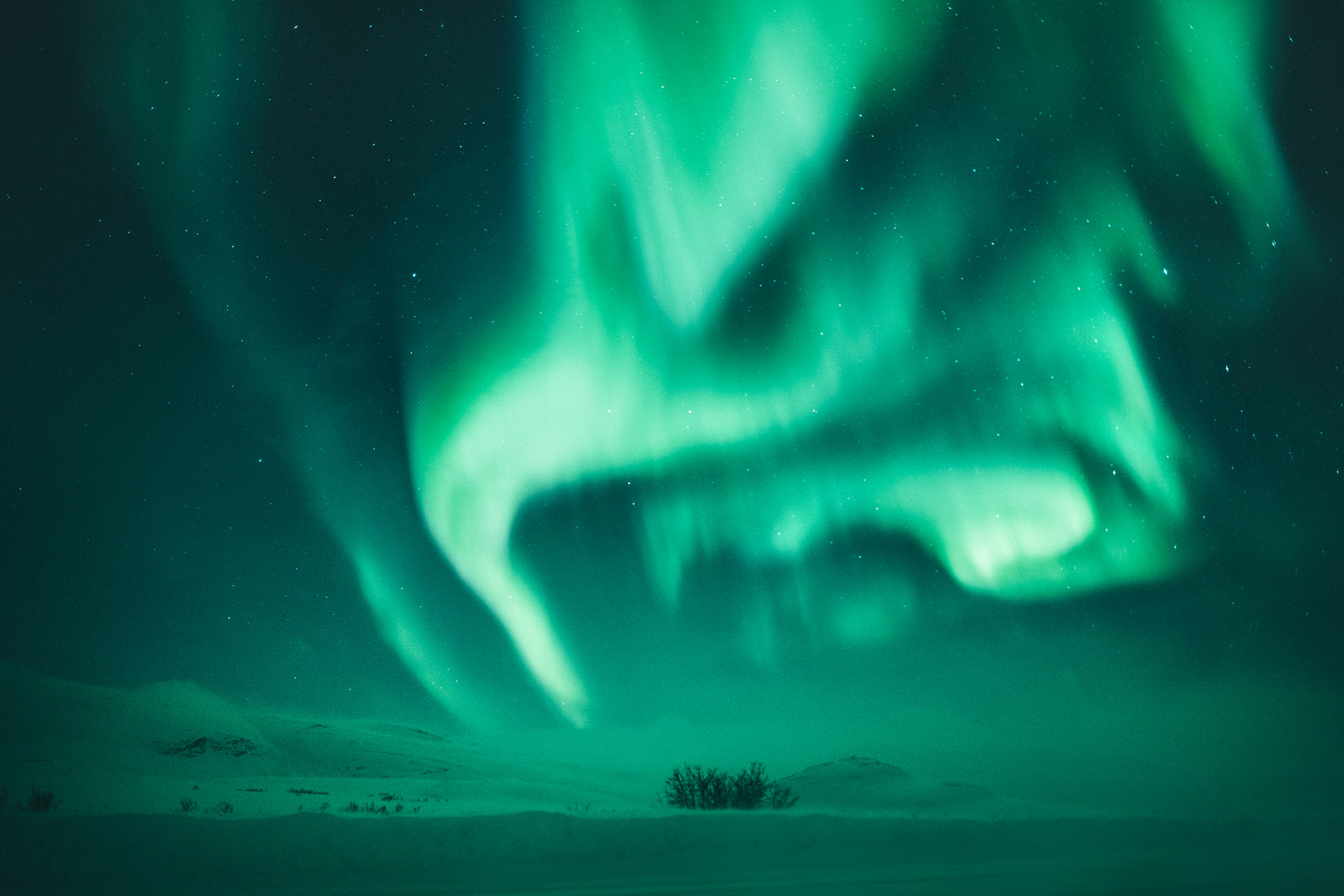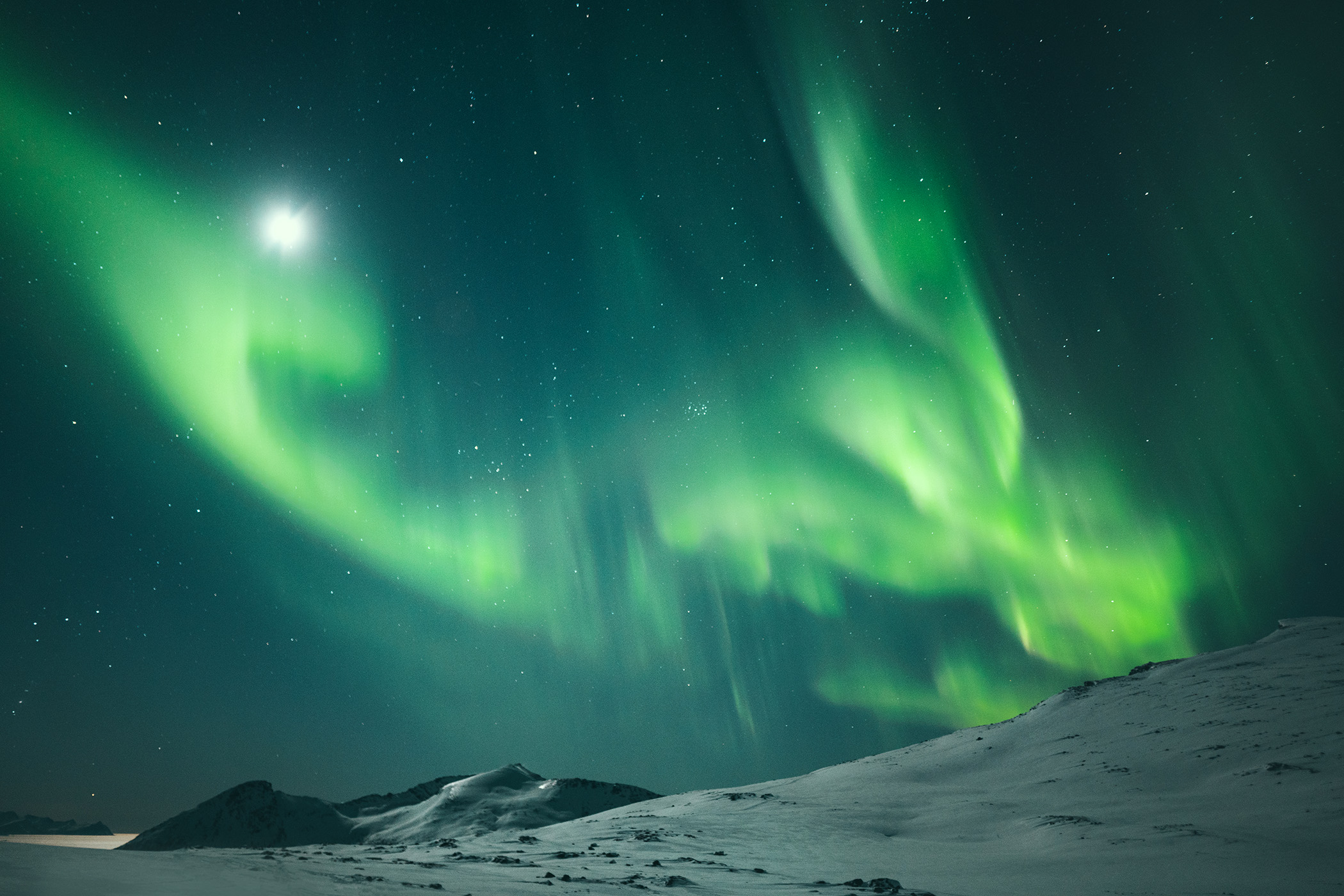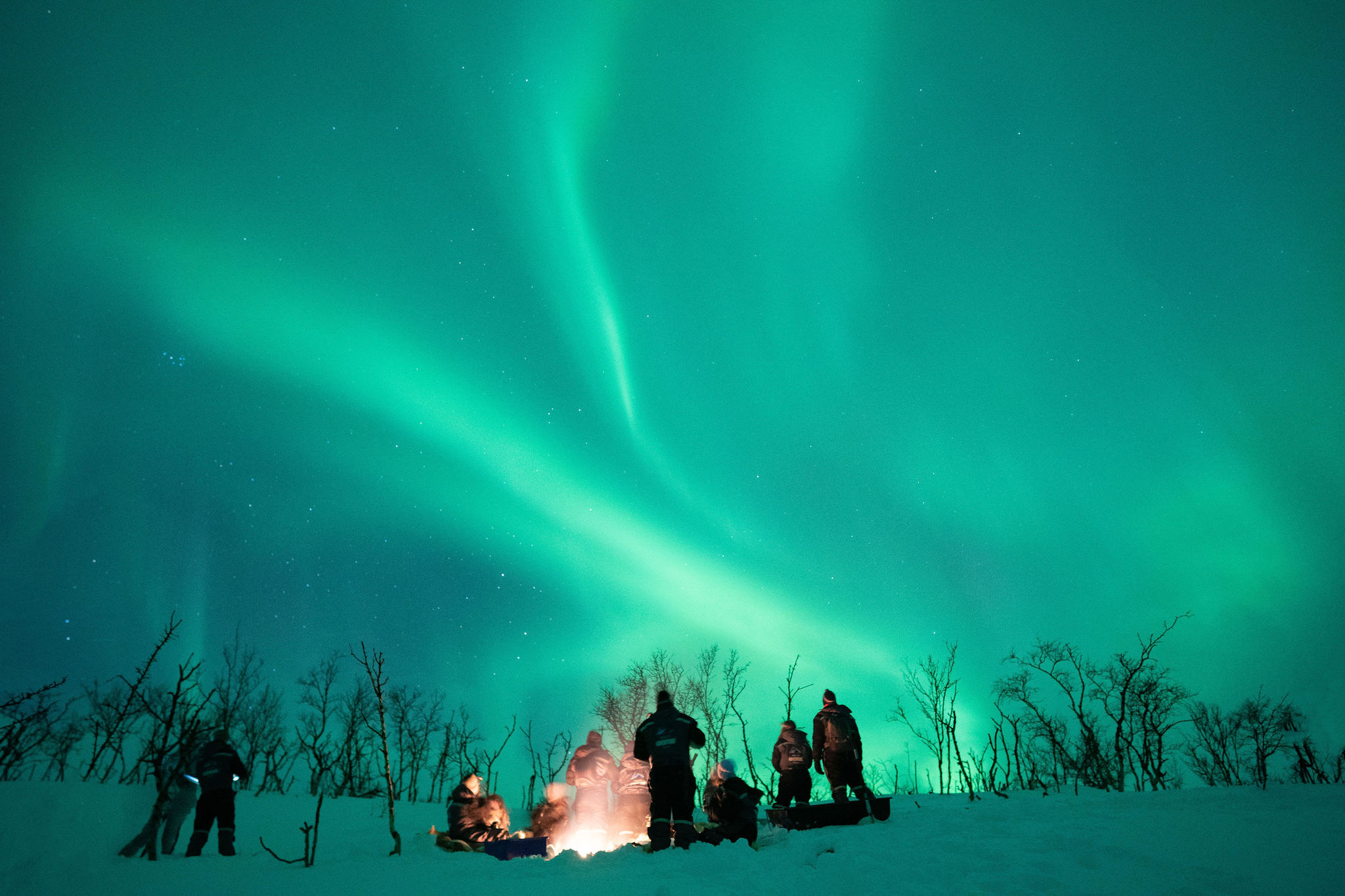Pro tips on how to hunt the Northern Lights from our expert guide.
By Jess
Hi, I am Jess, a Northern Lights Guide for Arctic Adventure Tours. Chasing the Aurora is not easy, but there are a few things you can do to significantly increase your chances of finding activity.
Hunting the Northern Lights here in Tromso, I feel very lucky. Almost every clear night I get to see one of the most fantastic shows on Earth. Not only this, but I get to share it with people from all over the world. I cannot get bored of it!
Successfully hunting the aurora borealis is very emotional, everybody should experience this at least once in their lifetime. Of course, it can be down to luck, if we find it or not, but there are a lot of ways to keep luck on your side during the chase! I always look for the clearest sky possible. Some nights are more challenging than others, but every time it is a unique experience and we make the most out of it.
I follow the weather forecast all afternoon. I use four different websites (because of course often the weather forecasts don’t agree) and here in coastal Tromsø the weather changes quickly.
As we drive into the night I continue checking the solar activity and the last weather update to be sure that we are heading in a promising direction. In the best case scenario we will find a beautiful location and stay there all night. We make a cosy place around a fire, and we wait for the northern lights if they are not already here. The keyword here is patience. Because if we have a clear sky there is no reason to move to another place. Wherever you are in northern Scandinavia, if you have a clear sky, you will see the same aurora at the same exact second. Northern lights appear very high up in the sky, so if we have stars, there is a good chance to see the aurora if or when it shows up.
Of course the weather can be very unpredictable around here. If I see that the weather is changing, or that we may have a better chances somewhere else, I may take the decision to start chasing the lights. Everyone will jump back on the bus and you will see me looking at the sky a lot, in quest for a gap in the clouds.
There are 3 different types of clouds, the low clouds, the middle clouds and the high clouds. The low and middle clouds tend to be very thick. You cannot even see the full moon through low cloud, let alone the northern lights though them. The high clouds are more like a thin veil and you can see the stars through them. And when I see stars, I am happy!
So when you do see the aurora, what can you actually expect to see? It is important to remember that the kind of pictures that you see on all the postcards in Tromsø are taken by individuals who may have been out multiple times in order to have the highest solar activity and the clearest sky possible. We cannot predict the solar activity in advance that much. I have never seen two nights the same, in terms of intensity, shapes and duration; it is always different.
From experience, the shortest aurora I have seen lasted for 20 seconds and the longest was already there when we arrived and was still there when we left hours later. My best advice is to enjoy the show with your eyes first, not through a screen, because we never know how long it will last.
So going back to ‘solar activity’ – this can seem complicated to understand, but in short I am talking about 4 different numbers:
- The first number, you may be familiar with. It’s called the KP index. The KP is a number that goes from 0 to 9 and it tells us the width of the belt of light. This belt of lights is centered around the magnetic north pole. If the KP is a small number, let’s say 1 or 2 it means that this ring is very thin and mostly up north. Then if the KP index increases the belt will become wider. Here in Tromsø we are very lucky because we live very near this belt of light, if not directly under it. So even with a small KP we CAN see the aurora from here BUT we need to have a very clear sky in the north direction, because what is gonna happen is the NL will appear in the north direction (because we stand south of the belt) and just above the horizon. Then if the KP is rising, the NL will appear higher in the sky. From here a KP 5 should be above our head and if the KP goes crazy numbers like 8 or 9 (almost never happens), we should be able to see the northern lights even in the south direction because we would be in the middle of the band of light. So the KP is related to the location.
- Then we have 3 numbers that are provided in real time by two satellites (DISCOVR and ACE) : The density is the number of the particles per cubic cm in the solar wind. This number can help us predict what kind of brightness we can expect in the NL. If this number is high then yes you can hope to see the ‘postcard’ kind of NL because more particles create more chemical reactions when they reach our atmosphere, and the more chemical reactions, the more light. However, if this number is low, then you will see a dimmer green, or greyish green. If this number is very low then, we may not even see the particles of light. But that does not mean they are not there. When the density is very low, the human eye cannot actually see any particles, however a camera can. Using a long exposure shot of 5 to 30 seconds the computer chip in the camera is gathering light and will display it all on one picture, so you will always have a brighter green on camera than what you can see with your naked eye. This is also the reason you have to use a tripod to take a picture of the NL.
- The third number, the speed of the solar wind, this number can help use to predict what shapes of northern light we can expect in the sky. If the speed is low, maybe we will see a static arch shape aurora. But when the speed is high then we can hope for dancing NL. What I really like with the dancing aurora is that is often comes with different colours other than green. The green is always there, but we can notice glimpse of red, pink or purple underneath it. This is directly due to the speed of the particles, because when a particle enters our atmosphere at high speed, then it reaches a deeper layer of gas. Our atmosphere is made of different gases layered on top of each other and each gas creates a different colour. Also depending on the speed, we can predict when those particles are going hit our atmosphere, usually between 30 minutes (if very high speed) to two and a half hours delay (if speed is low).
- The Bz index is the last number, and is the most important one. If this Bz number is negative it means that most of the particles are directed towards the northern hemisphere this means they are directed towards us. However, if this Bz number is positive, then most of the particles are going to hit south pole. If the Bz is around zero then particles will go half north and half south, it means that the brightness may be half of what the density number shows.
So when you see a Kp around 3, negative Bz, strong speed and strong density we can have a good show. But keep in mind that all those numbers are coming real time, so the chase is always on!
Happy hunting!




